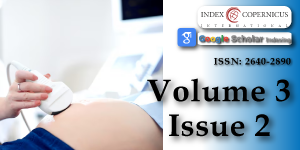Comparison of oocyte maturity rates in recombinant Human Chorionic Gonadotropin (HCG) and triptorelin acetate triggers: A prospective randomized study
Main Article Content
Abstract
Luteinizing Hormone (LH) like exposure in the mid cycle for inducing the oocyte maturation is the very crucial step in the success of ICSI treatment. Introduction of LH surge endogenously by GnRH-agonist for final oocyte maturation induction, may be more physiological compared with the administration of HCG. Since GnRH agonist would induce FSH surge also along with LH surge, as happens in natural cycle. However, the effects of giving HCG trigger for inducing only LH surge and giving GnRH agonist trigger for inducing both LH and FSH surge, in patients treated for ICSI with GnRH antagonists need more research. Sub fertile patients planned for ICSI, meeting the requirement of inclusion criteria, were started with recombinant FSH from day 2 of menstrual cycle. GnRH antagonists were started from day 6 of stimulation. FSH dose was adjusted according to the individual response. Trigger was planned when the lead follicle reaches 24 mm. For triggering, 100 patients were randomized to receive Recombinant HCG trigger and Triptorelin acetate trigger. Oocyte retrieval was done 36 hours after Recombinant hCG Trigger and 35 hours after Triptorelin acetate trigger. The oocyte maturity rate was assessed by the number of metaphase II oocytes retrieved.
Article Details
Copyright (c) 2020 Lakshmanan S, et al.

This work is licensed under a Creative Commons Attribution 4.0 International License.
World Health Organization. Prevalence of moderate and severe disability (in millions), by leading health condition associated with disability, and by age and income status of countries.
Shoham Z, Schacter M, Loumaye E, Weissman A, MacNamee M, et al. The luteinizing hormonesurge—the final stage in ovulation induction: modern aspects of ovulation triggering. Fertil Steril.1995; 64: 237–251. PubMed: https://pubmed.ncbi.nlm.nih.gov/7615097/
Voronina E, Wessel G. The regulation of oocyte maturation. Curr Top Dev Biol. 2003; 58: 53–110. PubMed: https://pubmed.ncbi.nlm.nih.gov/14711013/
Cheung LP, Lam PM, Lok IH, Chiu TT, Yeung SY, et al. GnRH antagonist versus long GnRH agonist protocol in poor responders undergoing IVF: a randomized controlled trial. Hum Reprod. 20: 616-621. PubMed: https://pubmed.ncbi.nlm.nih.gov/15608037/
Huirne JA, Homburg R and Lambalk CB. Are GnRH antagonists comparable to agonists for use in IVF? Hum Reprod. 2007. 22: 2805-2813. PubMed: https://pubmed.ncbi.nlm.nih.gov/17872909/
Olivennes F, Belaisch-Allart J, Emperaire JC, Dechaud H, Alvarez S, et al. Prospective, randomized, controlled study of in vitro fertilization-embryo transfer with a single dose of a luteinizing hormone-releasing hormone (LH-RH) antagonist (cetrorelix) or a depot formula of an LH-RH agonist (triptorelin). Fertil Steril. 2000; 73: 314-320. PubMed: https://pubmed.ncbi.nlm.nih.gov/10685535/
Humaidan P, Polyzos N, Alsbjerg B, Erb K, Mikkelsen A, et al. GnRHa trigger and individualized luteal phase hCG support according to ovarian response to stimulation: two prospective randomized controlled multi-center studies in IVF patients. Hum Reprod. 2013; 28: 2511–2521. PubMed: https://www.ncbi.nlm.nih.gov/pmc/articles/PMC5054292/
Reddy J, Turan V, Bedoschi G, Moy F, Oktay K. Triggering final oocyte maturation with gonadotropin-releasing hormone agonist (GnRHa) versus human chorionic gonadotropin (hCG) in breast cancer patients undergoing fertility preservation: an extended experience. J Assist Reprod Genet. 2014; 31: 927–932. PubMed: https://pubmed.ncbi.nlm.nih.gov/24854484/
Richards JS, Hernandez-Gonzalez I, Gonzalez-Robayna I, Teuling E, Lo Y, et al. Regulated expression of ADAMTS family members in follicles and cumulus oocyte complexes: evidence for specific and redundant patterns during ovulation. Biol Reprod. 2005; 72: 1241–1255.
Lamb JD, Shen S, McCulloch C, Jalalian L, Cedars MI, et al. Follicle-stimulating hormone administered at the time of human chorionic gonadotropin trigger improves oocyte developmental competence in in vitro fertilization cycles: a randomized, double-blind, placebo-controlled trial. Fertil Steril. 2011; 95: 1655–1660. PubMed: https://pubmed.ncbi.nlm.nih.gov/21315341/
Andersen CY, Leonardsen L, Ulloa-Aguirre A, Barrios-De-Tomasi J, Moore L, et al. FSH-induced resumption of meiosis in mouse oocytes: effect of different isoforms. Mol Hum Reprod.1999; 5: 726–731.
Shapiro BS, Andersen CY. Major drawbacks and additional benefits of agonist trigger-not ovarian hyper stimulation syndrome related. Fertil Steril. 2015; 103: 874–878. PubMed: https://pubmed.ncbi.nlm.nih.gov/25707333/
Gonen Y, Balakier H, Powell W, Casper RF. Use ofgonadotropin-releasing hormone agonist to trigger follicular maturation for in vitro fertilization. J ClinEndocrinol Metab. 1990; 71: 918–922. PubMed: https://pubmed.ncbi.nlm.nih.gov/2119392/
Andersen CY, Humaidan P, Ejdrup HB, Bungum L, Grøndahl ML, et al. Hormonal characteristics of follicular fluid from women receiving either GnRH agonist or hCG for ovulation induction. Hum Reprod. 2006; 21: 2126-2130. PubMed: https://pubmed.ncbi.nlm.nih.gov/16682403/
Humaidan P, Westergaard LG, Mikkelsen AL, Fukuda M, Yding Andersen C. Levels of the epidermal growthfactor-like peptide amphiregulin in follicular fluid reflect the mode of triggering ovulation: a comparison between gonadotrophin-releasing hormone agonist and urinary human chorionic gonadotrophin. Fertil Steril. 2011b; 95: 2034-2038. PubMed: https://pubmed.ncbi.nlm.nih.gov/21377153/
Mascarenhas MN, Flaxman SR, Boerma T, Vanderpoel S, Stevens GA. National, regional, andglobal trends in infertility prevalence since 1990:a systematic analysis of 277 health surveys. PLoSMed. 2012; 9: e1001356. PubMed: https://pubmed.ncbi.nlm.nih.gov/23271957/

